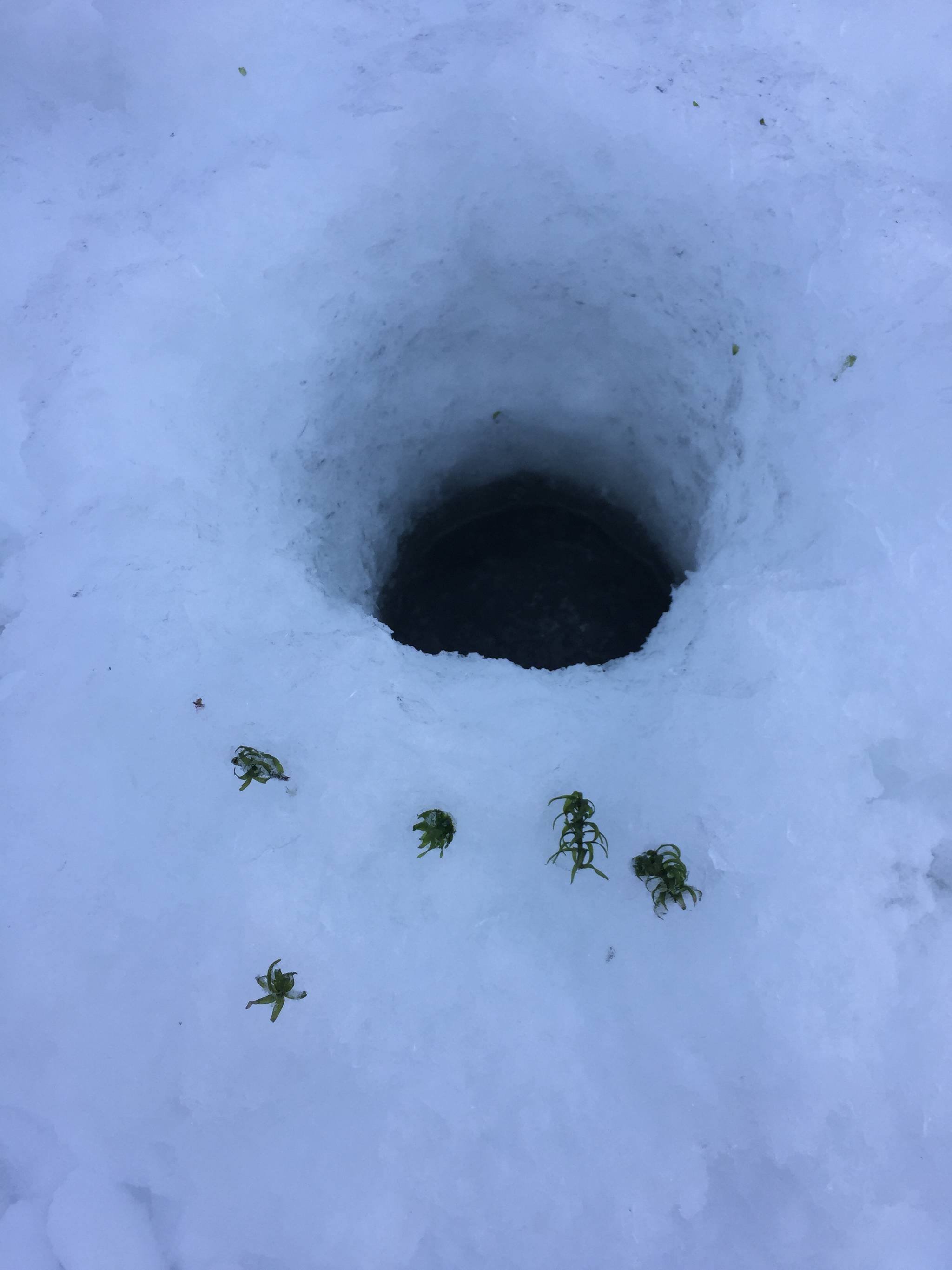The invasive water weed elodea has been identified in Soldotna’s Sport Lake.
The lake is one of the most popular on the central Kenai Peninsula for sportfishing because of its centrality and regular stocking efforts by the Alaska Department of Fish and Game. Fish and Game staff turned up fragments of the weed while they were drilling ice auger holes for a recent Kenai Peninsula Borough School District ice fishing event on Feb. 22.
They didn’t turn up much — of the 120 holes they drilled, elodea only surfaced in one, said Rob Massengill, a fisheries biologist with Fish and Game in Soldotna. After the event, the staff went back and looked for more, locating some fragments in another hole that may have been spread around by the students participating in the ice fishing event, he said.
Though they couldn’t tell the extent of the weed’s growth right away, he said it was positive that it only turned up in one of the holes.
“I take it as a good sign,” he said.
Fish and Game contacted the U.S. Fish and Wildlife Service, which has been coordinating elodea eradication efforts on the Kenai Peninsula and working with the Alaska Department of Natural Resources on efforts to eliminate the weed elsewhere in the state. Elodea can be particularly destructive to freshwater lake systems, as it grows beneath ice and can grow so thick that oxygen availability is low enough to kill fish. It can also degrade spawning habitat, get in the way of boat and floatplane traffic and damage property values.
It’s been documented in lakes in the Matanuska-Susitna Valley, Fairbanks, Cordova and Anchorage. The three lakes where it was documents on the Kenai Peninsula — Stormy, Daniels and Beck lakes in Nikiski — were treated and are thought to be clear of elodea.
Sport Lake was sampled in 2014, and there was no indication of elodea then, said John Morton, the supervisory biologist at the Kenai National Wildlife Refuge.
“That doesn’t mean it wasn’t there, but it wasn’t detected,” he said.
Refuge staff went out on the lake and attempted to survey it, but the ice and overflow interfered, Morton said. The rough plan is to try to start treatment after ice-out in the spring, and the staff is working on paperwork and will set up a public meeting to get people involved, he said.
There are a number of possible ways the weed could have been introduced. Elodea is natural in some places and is used as an aquarium plant, and some think that that is how it was introduced to Alaska in the first place — an illegally dumped aquarium. The weed also only requires a fragment to spread, so if a piece hitched a ride on a boat or a floatplane, it could have made it into the lake. Sport Lake has houses all around it, some of which have floatplane docks. The weed was found near the boat launch, Morton said.
To eliminate elodea, refuge staff has applied herbicides called diquat and fluridone, which don’t harm fish but have been fairly effective at killing elodea, into the three Nikiski lakes. The DNR is looking at the method for other parts of Alaska with elodea infestations, such as Chena Slough near Fairbanks and Lake Hood in Anchorage.
Morton said the refuge staff and the DNR are working together on eradicating the weed in Southcentral and will consult with the state on paperwork for Sport Lake. The refuge staff and the state are sharing information and materials — for example, the refuge donated extra product to help the state treat Alexander Lake in the Mat-Su Valley in September 2016, where the infestation had grown to cover 500 acres. The state plans to continue watching for other infestations in the Mat-Su valley.
“We’re actively trying to keep the Mat-Su and the Kenai Peninsula clear,” Morton said.
Reach Elizabeth Earl at elizabeth.earl@peninsulaclarion.com.

